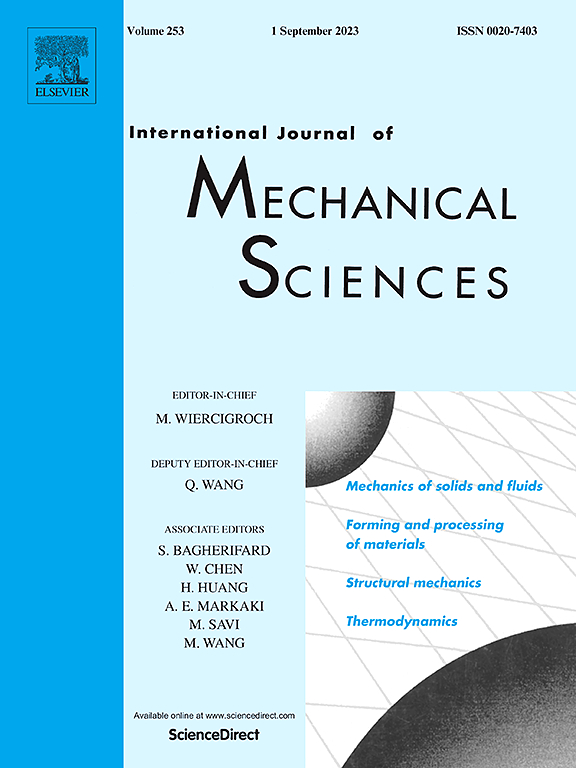Unraveling the co-evolution of microstructure and damage in α-titanium
IF 7.1
1区 工程技术
Q1 ENGINEERING, MECHANICAL
International Journal of Mechanical Sciences
Pub Date : 2025-03-17
DOI:10.1016/j.ijmecsci.2025.110161
引用次数: 0
Abstract
Understanding damage and fracture mechanisms governed by microstructure evolution is fundamental to advancing high-performance metallic materials development and precision manufacturing optimization. However, simultaneous observation of internal damage and crystalline microstructure during deformation has remained challenging, hindering the direct exploration of their synergetic evolution and correlation. We have addressed this gap by innovatively proposing a correlative microscopy approach combining high-resolution in-situ synchrotron radiation X-ray computed tomography with in-damage-position electron backscattered diffraction characterization and applied it to investigate grain size-dependent damage mechanisms in α-titanium sheets. Defect development of α-titanium sheets is evidenced to transform from penny-shaped cracks propagation into spherical voids nucleation, growth, and coalescence as the grain size decreases. For the first time, the spheronization of microvoids is revealed to be triggered by twinning-induced dynamic recrystallization as a collaborative consequence of high-density dislocation and twinning structures. In addition, based on the resulting interpretation of microstructure-sensitive damage mechanisms, cryogenic pre-deformation is proposed to achieve recrystallization activation and manipulate fracture behavior by regulating the twinning structures, thereby preventing premature failure and enhanced ductility. Ultimately, the benefit of the cryogenic pre-deformation process is validated with microchannel stamping, providing novel guides for the forming performance improvement of α-titanium sheets in microforming.

求助全文
约1分钟内获得全文
求助全文
来源期刊

International Journal of Mechanical Sciences
工程技术-工程:机械
CiteScore
12.80
自引率
17.80%
发文量
769
审稿时长
19 days
期刊介绍:
The International Journal of Mechanical Sciences (IJMS) serves as a global platform for the publication and dissemination of original research that contributes to a deeper scientific understanding of the fundamental disciplines within mechanical, civil, and material engineering.
The primary focus of IJMS is to showcase innovative and ground-breaking work that utilizes analytical and computational modeling techniques, such as Finite Element Method (FEM), Boundary Element Method (BEM), and mesh-free methods, among others. These modeling methods are applied to diverse fields including rigid-body mechanics (e.g., dynamics, vibration, stability), structural mechanics, metal forming, advanced materials (e.g., metals, composites, cellular, smart) behavior and applications, impact mechanics, strain localization, and other nonlinear effects (e.g., large deflections, plasticity, fracture).
Additionally, IJMS covers the realms of fluid mechanics (both external and internal flows), tribology, thermodynamics, and materials processing. These subjects collectively form the core of the journal's content.
In summary, IJMS provides a prestigious platform for researchers to present their original contributions, shedding light on analytical and computational modeling methods in various areas of mechanical engineering, as well as exploring the behavior and application of advanced materials, fluid mechanics, thermodynamics, and materials processing.
 求助内容:
求助内容: 应助结果提醒方式:
应助结果提醒方式:


